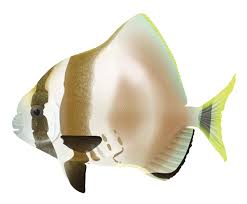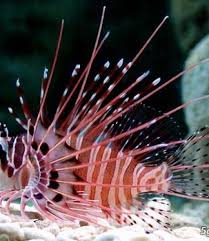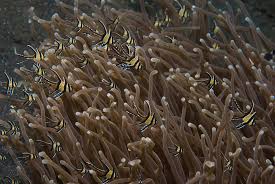
In Chinese culture, the dragon is a multifaceted symbol. While it is often associated with elements of nature, good fortune, and imperial authority, its role in military thought and strategy has been significant as well. The dragon symbolizes strength, leadership, and the unyielding force of nature, qualities that have been valued in military leaders, warriors, and even entire armies throughout Chinese history. From ancient warfare to modern military thought, the concept of the dragon has been deeply embedded in the way military power is understood and expressed in China.
The intertwining of the dragon with China’s military history provides a unique lens through which to explore the cultural, psychological, and strategic elements of Chinese warfare. This article delves into the dragon’s symbolic connection with military power, tracing its roots in ancient military philosophy, its impact on the art of war, and how it has influenced both historical and contemporary Chinese military strategy. By examining these facets, we can better understand the profound role the dragon plays in shaping Chinese military ideology and the cultural mindset that underpins China’s enduring martial legacy.
The Dragon in Chinese Mythology: A Symbol of Strength and Power
To appreciate the significance of the dragon in Chinese military thought, it is crucial to first understand its symbolic meanings in Chinese mythology. In contrast to the fearful, fire-breathing dragons in Western mythologies, the Chinese dragon is a symbol of positive force—mighty, dynamic, and benevolent. The dragon is often seen as a being of great power, associated with the heavens, rivers, and weather, with the ability to control natural elements, particularly rain, which is vital for agricultural success. This deep connection to nature’s elements suggests that the dragon is seen as a force that can command and bend the world around it, making it a fitting symbol for military might.
As a symbol of imperial power, the dragon was directly tied to the emperor, who was believed to be the son of Heaven with the divine right to rule. This divine mandate to govern was reflected in the symbolic association with the dragon. Military leaders were expected to embody the dragon’s strength, decisiveness, and unyielding determination in the face of conflict. The idea of being “like a dragon” became synonymous with possessing great power, and this notion has carried through centuries of Chinese military history.
The Dragon in the Context of Ancient Chinese Warfare
The concept of the dragon in Chinese military thought is deeply embedded in the country’s ancient history, particularly during periods of conflict such as the Warring States period (475–221 BCE). This was a time when Chinese philosophy and strategic thinking began to shape military practice, and the idea of the dragon as a military symbol was woven into the fabric of Chinese war theory.
In the writings of Sun Tzu, a key figure in Chinese military history, the concepts of power and strength are integral to understanding warfare. His work, “The Art of War,” emphasizes the importance of strategic flexibility, the use of deception, and the ability to swiftly adapt to changing circumstances, traits that align with the symbolic attributes of the dragon. The dragon’s power, grace, and fluidity in Chinese myth mirror Sun Tzu’s focus on fluid tactics and surprise attacks. Much like a dragon in flight, a military strategy rooted in these principles would be unpredictable, difficult to defend against, and overwhelming to opponents.
Sun Tzu’s ideas on the use of force, cunning, and precision are embodied in the idea of a military dragon that is both terrifying in its strength and nearly impossible to defeat. His approach to warfare did not rely on brute force alone but instead highlighted the importance of timing, deception, and understanding the terrain—similar to how a dragon in Chinese mythology knows how to navigate the heavens and the earth.
The concept of the dragon as a leader who commands through wisdom, strength, and moral authority would also influence military leaders and generals throughout Chinese history. For instance, in the Three Kingdoms period (220–280 CE), military strategists such as Zhuge Liang and Cao Cao were seen as embodying the dragon’s qualities in their leadership styles—showcasing both strategic brilliance and fierce determination.
The Dragon in Chinese Imperial Military Symbolism
As the emperor’s emblem, the dragon became a recurring motif in imperial military regalia and symbols. The military was an extension of the emperor’s power, and the dragon was often used to represent the emperor’s direct influence over the armed forces. For example, during the Ming and Qing Dynasties, the dragon appeared on military banners, armaments, and ceremonial garb, reminding soldiers of their connection to imperial authority and divine protection. The use of dragons in military insignia was also a psychological tool, reinforcing the idea that the soldiers were not merely following orders but were representing the will of heaven itself.
In the Qing Dynasty (1644–1912), the dragon was incorporated into the military’s formal insignia, with the five-clawed dragon reserved for the emperor and the four-clawed dragon used by his high-ranking officials. This differentiation underlined the divine nature of the emperor’s military leadership and the hierarchical structure within the military forces. The emperor’s armies, led by the symbolic strength of the dragon, were seen as invincible forces that could crush any enemy and maintain imperial power.
The dragon was also a common feature of military armor and weaponry, often appearing on the scabbards of swords, the hilts of daggers, and the crests of helmets. These symbols were not just decorative; they served to inspire the soldiers, reminding them of the spiritual and cultural power they were meant to embody on the battlefield.
The Dragon and Modern Chinese Military Strategy
In modern times, the symbolic use of the dragon continues to influence Chinese military thought and strategy, although the context has shifted in response to China’s political and technological evolution. The People’s Liberation Army (PLA), China’s armed forces, has embraced the image of the dragon in its military doctrine, emphasizing strength, unity, and strategic initiative. The dragon is not only a reminder of China’s imperial past but also a symbol of its modern aspirations in terms of military power and global influence.
In the context of modern military strategy, the dragon represents the fusion of traditional strength and contemporary warfare techniques. China’s military has increasingly focused on technological advancements, such as cyber warfare, space exploration, and advanced missile systems, while still maintaining the cultural ethos of strength and indomitable will that the dragon represents. Just as the dragon in ancient myths could navigate the natural elements with ease, modern Chinese military forces are trained to navigate the complex and ever-changing environment of modern warfare.
The PLA has sought to adapt Sun Tzu’s principles to the modern world, focusing on cyber capabilities, information warfare, and precision strikes. The concept of “dragon-like agility” in modern Chinese military thought refers to the idea of being able to swiftly strike at an adversary’s weakness, similar to how a dragon can strike unexpectedly and with overwhelming force. This adaptability is viewed as key to success in the unpredictable and high-tech nature of modern conflicts.
The Dragon and the Concept of National Strength
Beyond the military sphere, the dragon also plays a central role in the broader concept of national strength and pride in China. The notion of “national rejuvenation,” which has been a central theme of China’s recent political discourse, often invokes the image of the dragon as a representation of China’s strength and return to global prominence. This idea is reflected in the slogan “The Great Revival of the Chinese Nation,” in which the dragon symbolizes the resurgence of China as a world power.
In this context, the military is not seen in isolation but as a key pillar in the rejuvenation of China’s national strength. The strength of the military—like the power of the dragon—becomes a critical component of the country’s position on the global stage. The dragon, as both a symbol and a strategic tool, thus plays a role in communicating China’s military power, cultural heritage, and global aspirations.
The Dragon and the People’s Liberation Army Today
The Chinese military today continues to honor the traditional symbolism of the dragon while simultaneously modernizing its structure and capabilities. The “dragon” is not just an emblem or mythological figure but a concept that represents the strength, unity, and indomitable spirit of the Chinese military. The PLA’s current strategy—centered around modernization, technological advancement, and comprehensive power projection—is designed to make the Chinese military as formidable as the dragon itself, capable of asserting China’s national interests on the global stage.
Conclusion
The dragon’s influence on Chinese military thought is profound and multifaceted. From ancient philosophy to modern strategy, the dragon has come to symbolize the strength, wisdom, and strategic agility required to succeed in warfare. It represents both the leadership of the emperor and the collective power of the nation’s military forces. Through its connection to figures like Sun Tzu and its presence in imperial military regalia, the dragon has shaped the very identity of China’s military.
As China continues to expand its global influence, the concept of the dragon remains a powerful symbol, not only of military strength but of the country’s cultural and strategic prowess. The legacy of the dragon in Chinese military thought is a reminder that true power is not just a matter of force but of intelligence, strategy, and the unyielding will to succeed in the face of challenges.









